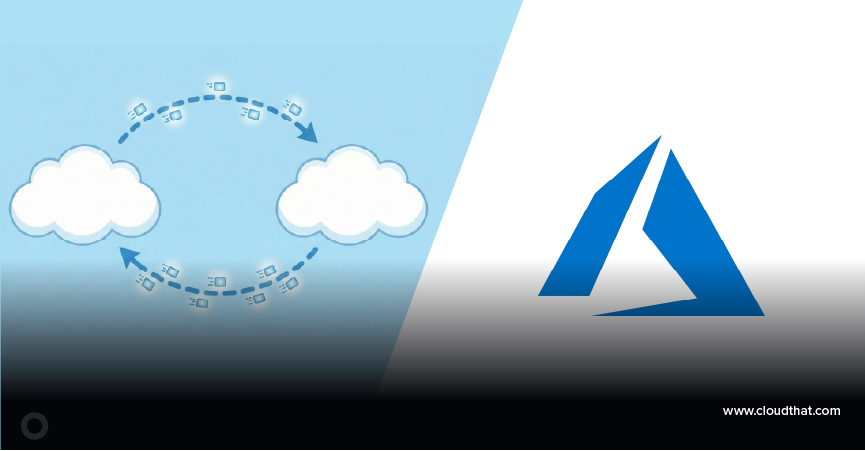|
Voiced by Amazon Polly |
Overview
“IaaC with CI/CD on GCP” brings together the best of two powerful practices in cloud computing: Infrastructure as Code (IaaC) and Continuous Integration and Continuous Deployment (CI/CD). This combination revolutionizes how infrastructure is managed, deployed, and scaled on the Google Cloud Platform (GCP).
This blog will explore the world of IaaC, its benefits, and principles and understand how it can be seamlessly integrated with CI/CD methodologies. Organizations can achieve greater automation, scalability, and reliability in infrastructure deployments by leveraging popular IaaC tools like Terraform alongside GCP’s robust CI/CD services, such as Cloud Build.
We will explore best practices, advanced topics, and real-world use cases to understand how IaaC with CI/CD on GCP can empower businesses to streamline infrastructure management and maximize development productivity.
Pioneers in Cloud Consulting & Migration Services
- Reduced infrastructural costs
- Accelerated application deployment
Introduction
Managing infrastructure efficiently is crucial for businesses in today’s fast-paced and dynamic cloud environments.
Tools & Services Used
- Terraform: Terraform is a popular Infrastructure as Code (IaaC) tool that automates infrastructure provisioning and management. It uses declarative language to define infrastructure configurations, making describing the desired state of resources easy. With support for multiple cloud providers, including Google Cloud Platform (GCP), Terraform offers a consistent approach to infrastructure management. It simplifies provisioning, enables change tracking, and facilitates collaboration. By leveraging Terraform’s features and extensive library, organizations can streamline their infrastructure workflows and achieve greater agility in the cloud.
- Cloud Build: GCP Cloud Build is a CI/CD platform on Google Cloud Platform that automates build, test, and deployment processes. It supports popular tools and version control systems, enabling efficient software delivery pipelines. With features like parallel builds and build triggers, it simplifies the CI/CD process and allows developers to focus on building high-quality applications.
- GitHub: GitHub is a popular web-based platform for version control and collaboration, facilitating seamless code management and collaboration among developers. It supports Git and offers essential features like pull requests and issue tracking. GitHub is a central hub for open-source projects and is crucial in the software development lifecycle.
Working
The user would need to maintain IaaC in a GitHub repository. That repository would be connected to Cloud Build. Whenever there is a push in any branch, the Cloud Build get triggered and runs the command “terraform validate” and “terraform plan” onto the latest pushed code. If the push is into the master/main branch (this can be manually specified), Cloud Build would create the infrastructure on the GCP.

Step-by-Step Guide
- Setup terraform code: Create a terraform code that would be deployed on GCP.
- Create a ‘cloudbuild.yaml’ file: “cloudbuild.yaml” is a configuration file used in Google Cloud Build. It defines build steps and triggers for the CI/CD pipeline, enabling automation of build, test, and deployment processes within the Google Cloud Platform. This file would have steps that the Cloud Build and the commands would pick up would be running.
- Push the code in the GitHub repo. I’ve created a public repository for the reference: https://github.com/avinashvidyarthi/terraform-ci-cd
- Create a trigger in the Cloud Build:
- Click on the “Create Trigger”

- Give a name to the trigger.

- Create the event and select the repository.

- Select the branch, type of configuration, and location of the configuration file.

- Select a service account with the required permission to deploy the resources in the GCP project.

- Click on the “Create” button.
5. Now push to any branch, and watch the Cloud Build run. We have pushed to the ‘main’ branch to trigger the infrastructure build.

The steps are completed successfully, and the VM is now created. You can also view the logs in the build logs.


Conclusion
Adopting IaaC with CI/CD on the Google Cloud Platform empowers organizations to automate infrastructure provisioning, configuration, and deployment, resulting in improved efficiency, reduced manual errors, and increased agility. By leveraging the right tools, following best practices, and embracing automation, businesses can streamline their infrastructure management processes and focus more on innovation and delivering value to their customers in the rapidly evolving cloud landscape.
Making IT Networks Enterprise-ready – Cloud Management Services
- Accelerated cloud migration
- End-to-end view of the cloud environment
About CloudThat
CloudThat is an award-winning company and the first in India to offer cloud training and consulting services worldwide. As a Microsoft Solutions Partner, AWS Advanced Tier Training Partner, and Google Cloud Platform Partner, CloudThat has empowered over 850,000 professionals through 600+ cloud certifications winning global recognition for its training excellence including 20 MCT Trainers in Microsoft’s Global Top 100 and an impressive 12 awards in the last 8 years. CloudThat specializes in Cloud Migration, Data Platforms, DevOps, IoT, and cutting-edge technologies like Gen AI & AI/ML. It has delivered over 500 consulting projects for 250+ organizations in 30+ countries as it continues to empower professionals and enterprises to thrive in the digital-first world.
FAQs
1. What is IaaC?
ANS: – Infrastructure as Code (IaaC) is an approach to infrastructure provisioning and management that utilizes machine-readable files to define and automate the deployment and configuration of infrastructure resources, such as virtual machines, networks, and storage, in a consistent and reproducible manner.
2. How does IaaC with CI/CD benefit infrastructure deployment and management?
ANS: – By combining IaaC with CI/CD, organizations can achieve streamlined infrastructure deployment and management processes. IaaC ensures that infrastructure configurations are version controlled, automated, and reusable, reducing manual errors and enabling rapid and consistent provisioning. CI/CD allows for automated testing, validation, and deployment of infrastructure changes, resulting in faster and more reliable deployments.
3. How does IaaC with CI/CD enhance scalability and maintainability?
ANS: – IaaC with CI/CD allows for the automation of infrastructure deployments, making it easier to scale resources up or down as needed. With version-controlled infrastructure code, it becomes straightforward to replicate environments and make changes across multiple deployments. Additionally, automated testing and validation in CI/CD pipelines ensure that infrastructure changes are thoroughly vetted, enhancing maintainability and reducing the risk of issues.

WRITTEN BY Avinash Kumar
Avinash Kumar is a Senior Research Associate at CloudThat, specializing in Cloud Engineering, NodeJS development, and Google Cloud Platform. With his skills, he creates innovative solutions that meet the complex needs of today's digital landscape. He's dedicated to staying at the forefront of emerging cloud technologies.


 Login
Login


 June 8, 2023
June 8, 2023 PREV
PREV











Comments